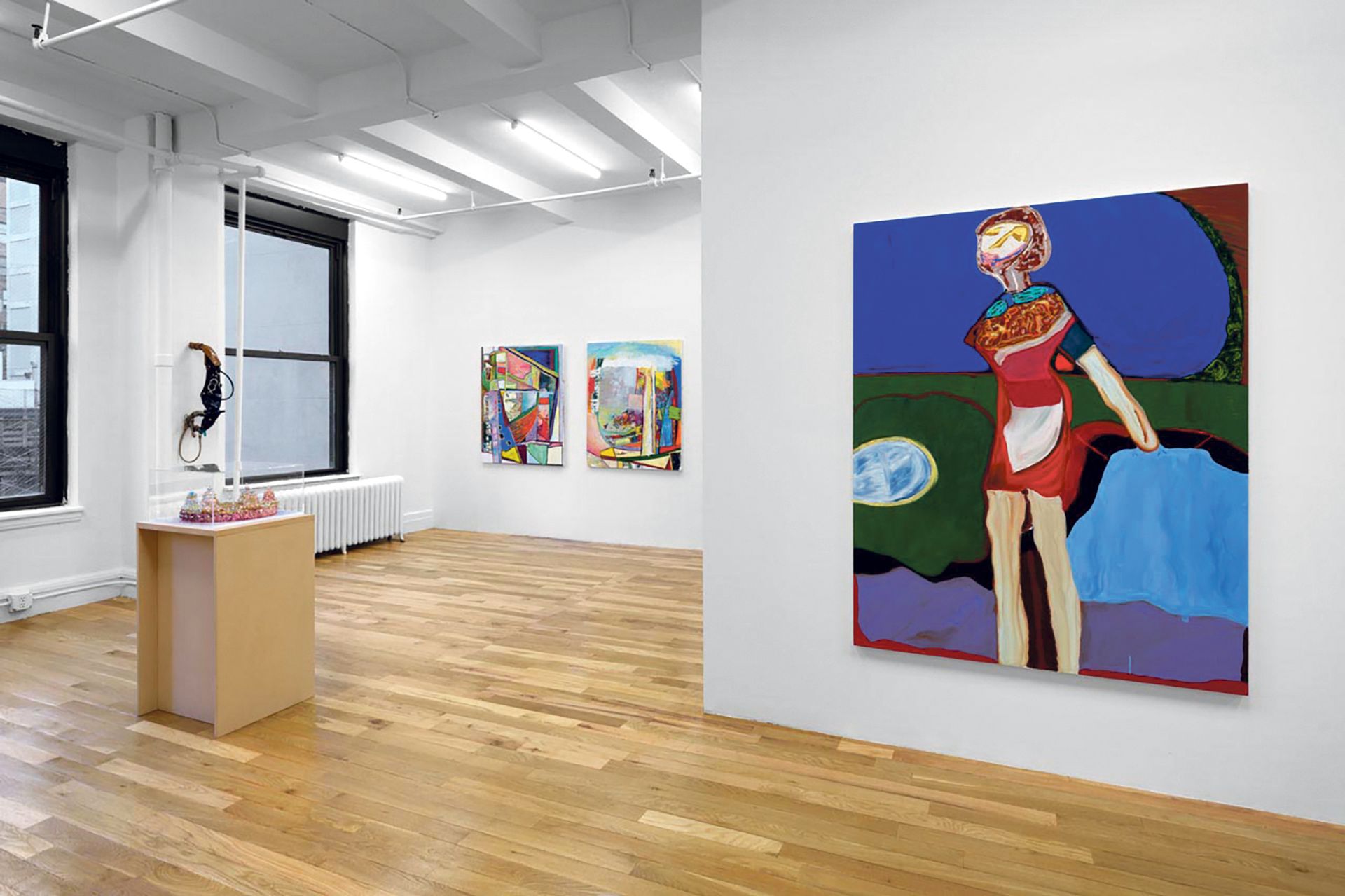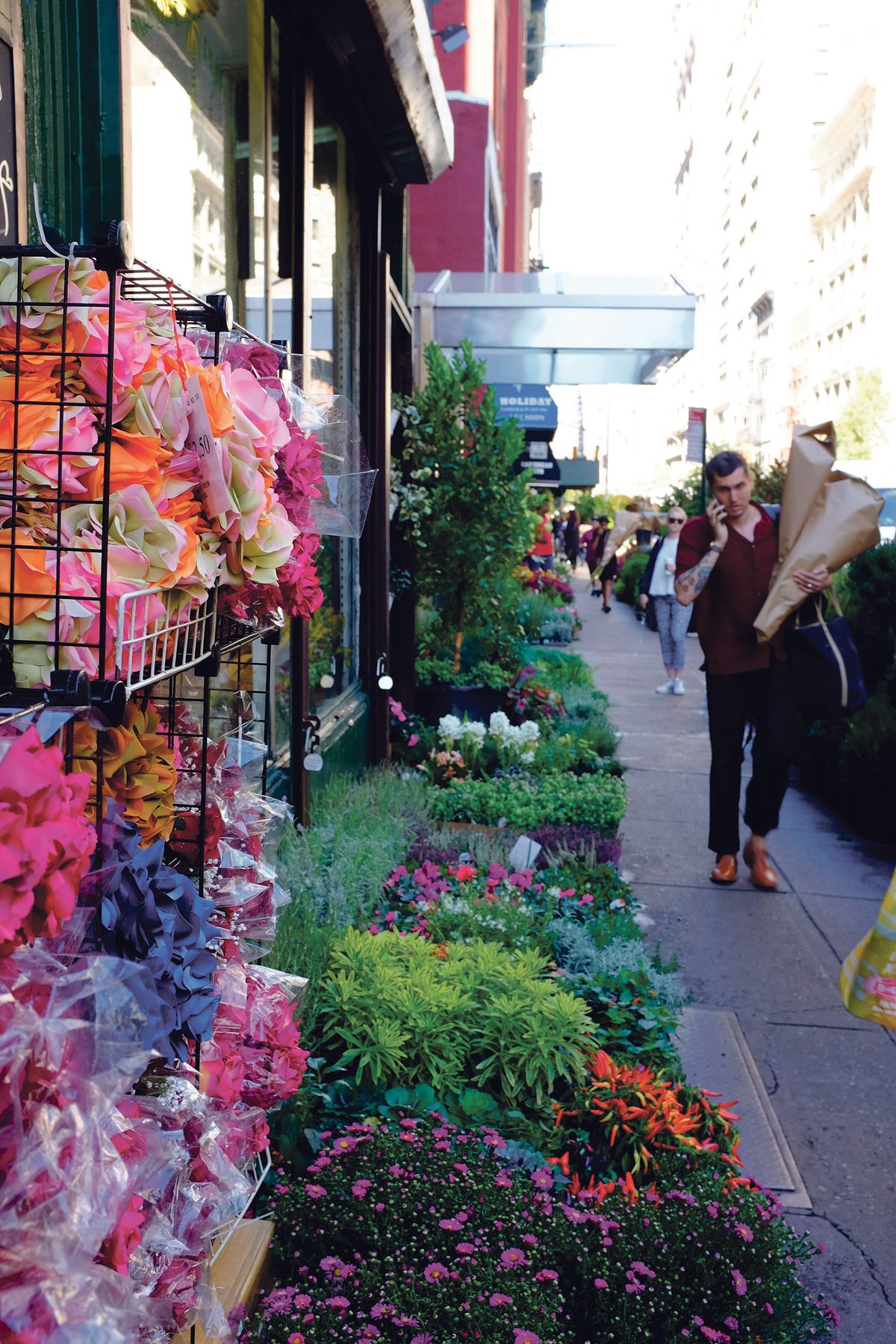While the nexus of New York’s commercial art scene is firmly rooted in Chelsea, with footholds in the Upper East Side, Soho, the Lower East Side and Tribeca, a cohort of galleries is slowly forming in a different neighbourhood: the Flower District. Centred on the stretches of 27th and 28th Streets between Sixth and Seventh Avenues that have served as the city’s wholesale flower market since the late 19th century, the area is seeing an increase in commercial art venues, as dealers are drawn to the vibrancy of the neighbourhood as well as the relative breathing room away from the crowded art hubs.
The Flower District’s art community has been slowly growing for decades. The Center for Book Arts has been on 27th Street since 1999, and the non-profit CUE Art Foundation moved from Chelsea to a space on 25th Street in 2012. The following year, Planthouse opened on 28th Street and moved to its current location a few doors down in 2015. The Joan Mitchell Foundation also made the Flower District home to its Education and Archives & Research Center in 2014 and moved all its offices there in 2017. In 2015, the dealer Casey Kaplan traded a prime Chelsea location for a space on 27th Street and was joined soon thereafter by Galeria Nara Roesler, which opened its first location outside Brazil on 28th Street in the form of a viewing room that it held until opening on the Upper East Side in 2017. (The gallery is now in Chelsea.)

New kid on the block: Polina Berlin Gallery moved to 27th Street in February, taking up residence next door to Paul Soto Steven Probert
In recent years, the Flower District has been increasingly on the radar for dealers looking to move or expand. Since the spring of 2023, three additional commercial spaces have opened along 27th Street: two in the same building as Casey Kaplan—Paul Soto and Polina Berlin Gallery—and an artist-run gallery called Rumpelstiltskin that opened on the same block after five years in Greenpoint, Brooklyn.
For Soto, the Flower District was a natural fit. The Los Angeles-based dealer began his search for a venue to house his East Coast branch at the end of 2022. “I knew that I wanted to be near another gallery,” Soto says. “Casey Kaplan had been in the Flower District for over a decade, and I respect his programme. The building he is in ended up being a good fit.” Soto opened on the seventh floor of the office building that houses Casey Kaplan’s gallery at the end of 2023.
Vibrant energy
“We are in this kaleidoscopic, interstitial zone between intense and different pockets of human energy,” Soto says. Included in these pockets are the nearby galleries in Chelsea, the Fashion Institute of Technology’s campus, the commercial and transportation hubs of Herald Square, Madison Square Garden and Penn Station, and luxury hotels and restaurants in NoMad. The area is along several subway lines, making it relatively accessible.
While the neighbourhood’s growth and vibrant energy is attracting new businesses, it is also threatening to price out existing ones. “I was forced out of my first location after the building sold in 2015,” says Planthouse founder Katie Michel. “The space I’m in now is in the historic Tin Pan Alley, and we have a certain level of protection against development with the building’s landmark status, but there’s always a risk of being priced out. The area has grown around me, especially with the luxury developments. No one is immune to the real-estate market.”
As the area developed, prices for some real estate in the Flower District have increased and are now comparable to other popular gallery neighbourhoods. The average price per square foot for ground-floor commercial spaces in the Flower District is now around $80 to $120, compared with $100 to $130 in Tribeca and $100 to $150 in Chelsea.
“The buildings [in the Flower District] can absolutely have the right bones for galleries,” says Jonathan Travis, an agent at Redwood Property Group who has helped several galleries find spaces, mainly in Tribeca, and was Casey Kaplan’s broker when the gallery moved to the Flower District. “The Flower District tends to have larger commercial office buildings and the ground-floor spaces often have good volume—high ceilings and significant width,” Travis adds. Still, he says, the majority of interest from galleries is in Tribeca; indeed, the Flower District’s growth in the art industry is nowhere near the exponential rise the more southerly district has seen in the past five years.
The Flower District’s latest newcomer, Polina Berlin Gallery, moved into the space adjacent to Paul Soto in February. Berlin first opened her gallery in 2022 in a townhouse on the Upper East Side but decided to move when the building went up for sale.
“I wanted an intimate space to remain nimble and keep overhead low. I quickly realised that I wasn’t going to find the right home in Tribeca,” Berlin says. As other Flower District dealers note, Berlin has found that the inventory available in these more established areas is limited, too large or requires expensive renovations. “I went to Paul Soto’s inaugural show and loved the energy of the street,” she says. “It felt like being in the belly of the city surrounded by different businesses.” During the opening, Soto showed Berlin the neighbouring unit, which happened to be available.
Flexible space
“I brought a few of the artists I work with to the space, which has higher ceilings and a more flexible layout than my previous gallery, and they were elated to have a new space to respond to and present in,” Berlin says. “If a space is conducive to what your artists want to do and is exciting, maybe even challenging their practice, then it’s worth taking a risk on a newer area.”
On higher floors, like the one that Soto and Berlin’s galleries occupy, the rents are much lower. “Upper-floor rents in loft-like spaces in the Flower District are affordable compared to other gallery districts in Manhattan,” says Susan Penzner, whose boutique real-estate firm has worked with several galleries in Tribeca and Chelsea. “At $40 to $60 per square foot, this is a substantial discount from the ground-floor prices in Tribeca and Chelsea. However, the long blocks and large buildings in the Flower District will pose a challenge to creating a cohesive district.”
As one of the more established Flower District tenants, the CUE Art Foundation has been uniquely positioned to watch the area’s growth. “The Flower District is not necessarily a cohesive community, but more an eclectic mix,” says executive director Jinny Khanduja. “The neighbourhood still feels reflective of a version of New York that we’re slowly losing in areas where the arts are more tied up in branding and development efforts.”
While the area may not become the next Tribeca, that does not seem to be a driving factor for some of its gallery tenants at the moment.
“The people who visit my gallery do so with intention,” Berlin says. “Having worked in and operated galleries in neighbourhoods across the city, I’ve found that when someone deliberately seeks out a gallery as opposed to strolling through an area and popping into whatever is open, there’s much more meaningful engagement. Gallery districts are convenient, but visiting them can be fatiguing.”
Michel concurs. “We might not get the foot traffic of somewhere like Chelsea and Soho, but that doesn’t mean we’re not getting buyers,” she says. “If you have a good programme, where you are doesn’t matter.”


